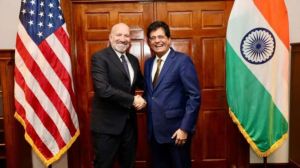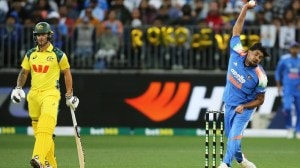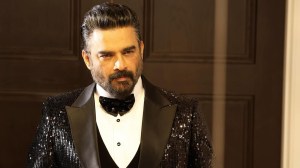Mumbai’s incomplete tryst with justice
Only Mumbai’s riot victims will understand the irony. Bilkis Bano, hounded and threatened in her own state...

Only Mumbai’s riot victims will understand the irony. Bilkis Bano, hounded and threatened in her own state, got justice in their city. Even while her tormentors, including the police, were being convicted and sentenced in a Mumbai court, the city’s riot victims, who had been similarly targeted with the help of the police 15 years ago, were discovering that their city, which had given Bilkis a new faith in the system, had nothing to offer them.
Forced by public pressure to take a fresh look at Mumbai’s riot cases, a high-level committee, after weeks of scrutiny, has released a list of cases to be sent to fast-track courts, which would try them exclusively. They had found “no case which was not registered because of oversight, delay or refusal by the police,” announced a senior home department official.
The Srikrishna Commission’s two-volume report is only 238 pages long. Of these, two pages are spent on the ‘Diamond Jubilee incident’. Haroon Rashid, resident of the Diamond Jubilee Compound and editor at that time of Urdu Blitz and later of the Urdu daily Inquilab, had travelled throughout the country, telling the story of how the compound had been attacked and finally burnt by Shiv Sainiks, with whom the compound’s boys used to play cricket, and how the policemen on duty had simply stood by. The Commission found that assistant inspector A.N. Kamat had not even bothered to record statements of the residents.
This case was closed by the police as ‘true, but undetected’. Kamat is one of the 31 policemen against whom the Commission had recommended ‘strict action’ for “utter dereliction of duty; serious lapses in investigation; passive and active collaboration with Shiv Sainiks”. Kamat has indeed been punished: his increments were stopped for six whole months. CR 25/93, LT Marg police station, was re-opened in 2001 by the special task force (STF) set up to act on the report, but closed again as ‘true, but undetected’. Why? Residents recall a perfunctory visit by two cops when most of the men were away at work, asking if they were interested in pursuing the case. No assurances were given of protection; no encouragement to come forward and help bring the culprits to book.
Two more pages are devoted to what the Commission describes as ‘cold-blooded murder by the police’. The victim: 16-year-old college student Shahnawaz Wagle. The testimony of his sister, mother and other eye-witnesses convinced Justice Srikrishna that Shahnawaz had been shot in the back by the police as he was being led to a police vehicle, not while rioting, as the police claimed. He ordered an inquiry. Disgusted by the ‘eyewash’ that was conducted, he recommended in the report that the incident be probed by an impartial agency. The STF probed it and repeated the police version. Shahnawaz’s case features nowhere in the new list, though his father has given his statement afresh to the zonal DCP.
An entire paragraph in the report is devoted to the attack on Azmi Stores, a small shop in Dongri. Its owner, Mohamed Ismail told the police how his Hindu neighbours stopped the miscreants from setting fire to it. But the police didn’t bother to take the neighbours’ statements, which could have helped identify the miscreants. The case was closed, re-opened by the STF, closed again.
Byculla’s Shabbir Tambawalla’s complaint about his building being attacked by Shiv Sainiks, was registered six weeks after the incident. The report describes how assistant inspector Jaiswal called the local shakha pramukh and asked Tambawalla to compromise. In a recent interview to this reporter, Tambawala expressed readiness to pursue the case. But his name does not figure in the latest list.
Perhaps the most vivid example of the blind alley Mumbai’s riot victims find themselves in is CR 718/92, Dharavi Police station, described by the Commission as the very first violent incident of the riots. Contrary to popular belief, the first stone wasn’t thrown by Muslims angry at the demolition of the Babri Masjid. It was thrown at namazis in Dharavi, by a victory cycle rally of Shiv Sainiks celebrating the demolition, on the evening of December 6, 1992. The report devotes two pages to the rally, taken out in defiance of the police, its incendiary slogans, and the police’s delay in registering a case against the organisers, all Sena corporators and local leaders.
Guess what? The Congress government has still not given permission to prosecute these worthies, and surprise! CR 718/92 does not feature in the recent list.
So where do Mumbai’s riot victims go for justice?
The writer is a Mumbai-based freelance journalist who has covered the ’92-’93 Mumbai riots jyoti.punwani@gmail.com





- 01
- 02
- 03
- 04
- 05


























